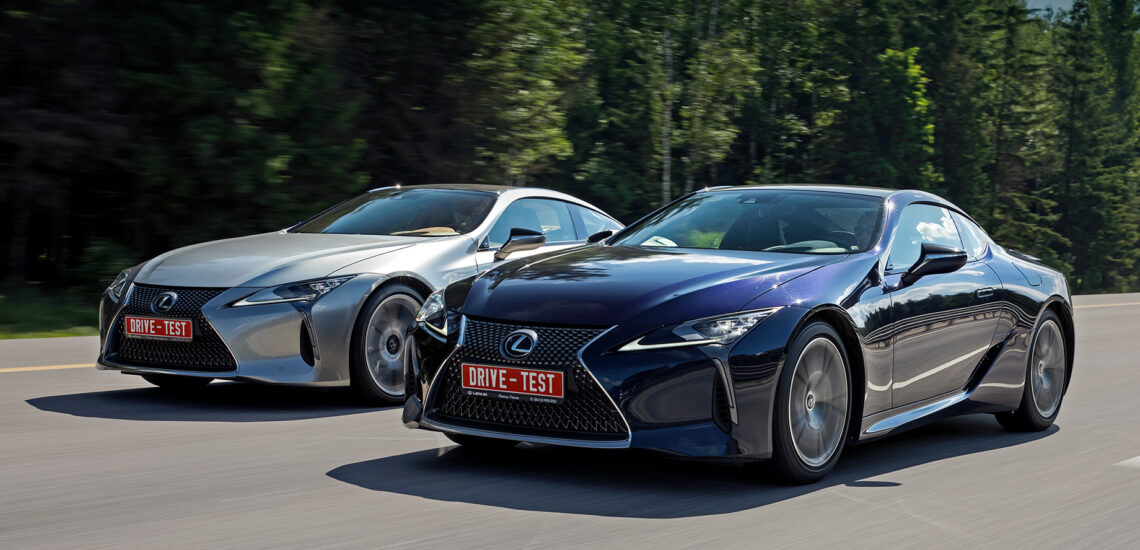Карантин у Toyota змусив поміняти шини на LC 500 до середини літа. На цей момент синій Lexus простояв у гаражі досить довго, щоб стерти враження, накопичені за зиму. Колись це вигідно підкреслило харизматичний автомобіль. Атмосфера ворожої пори року додала екзотичному купе героїчності та розмаху. Здивувала збалансованість, слизьке покриття допомогло відчути півтони персонажа. Створилася ілюзія серйозного потенціалу, розкриття якого я з нетерпінням чекав з приходом тепла. Але результат виявився більш прозаїчним.
Виявляється, ідеальні умови непривітні. Якщо описати літній характер Lexus великими штрихами, то картина виходить суперечливою. З одного боку, LC 500 нарешті знайшов свою тягу і пішов більш-менш швидко. З іншого боку, стало клопітно. Звичайний RunFlat зробив купе більш вимогливим до якості дорожнього покриття. На дорозі нервує з помітною лежанням, вимагає підрулювання. Він норовить втекти від колії, якої не помітив на зимовій гумі.
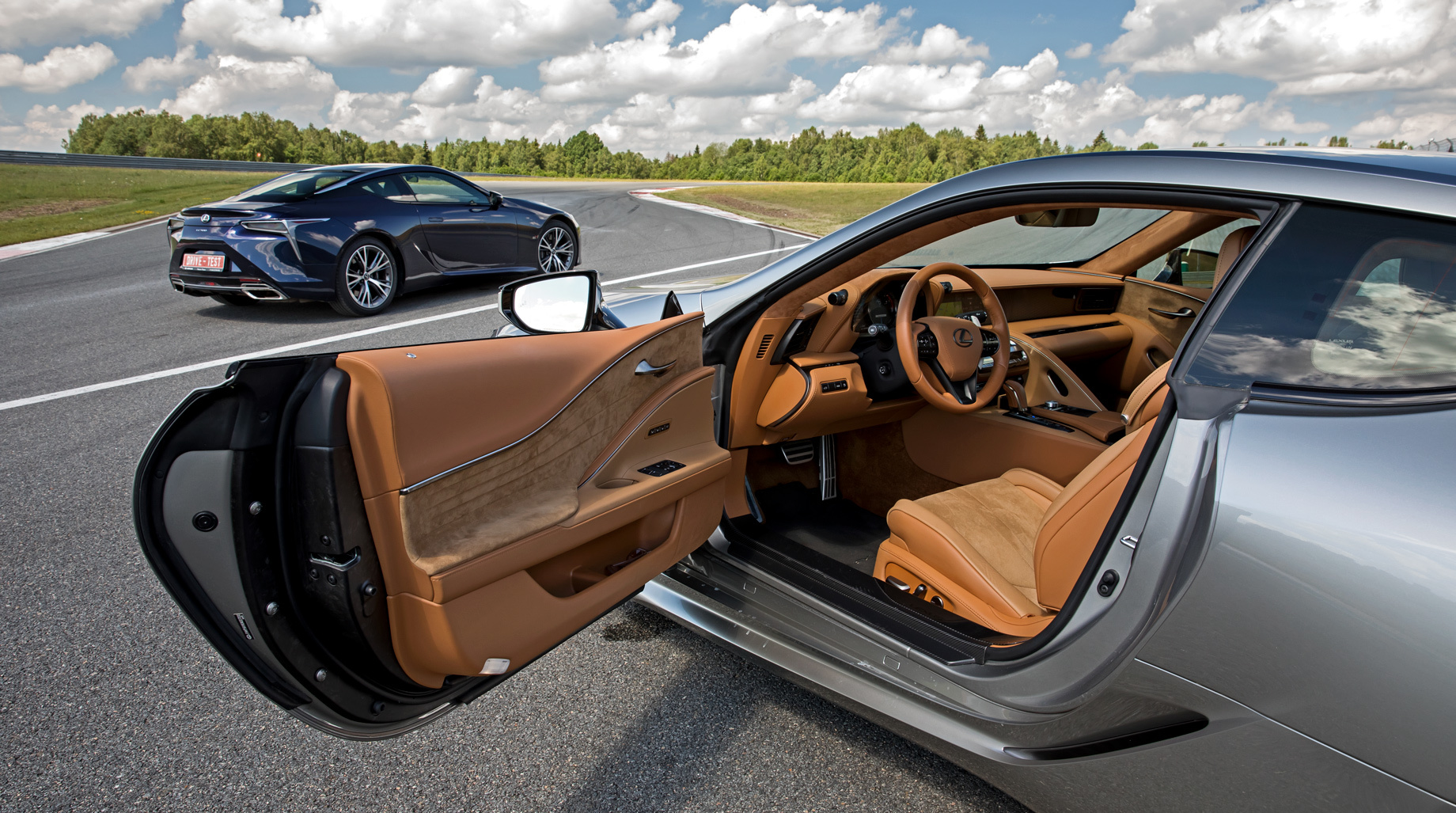
Комфорт їзди в цілому не покращився. Без шпильок тихіше, але їзда помітно погіршується, навіть на автомобілі з 20-дюймовими шинами. І взяти, щоб зберегти цілісність експерименту, 2019 LC 500 з колесами різної ширини діаметром 21 дюйм ще більш неспокійний і жорсткіший. Модернізовані амортизатори з окремим регулюванням стиснення та відскоку не компенсують зменшення профілю шини та збільшення непідресорених мас. Поперечні шарніри змушують сріблястий Лексус сильніше вібрувати і танцювати на короткій хвилі.
Динаміка не запаморочлива. Найкращий час розгону до 60 миль/год, зафіксований Racelogic у напівпорожній машині при 20ºС (68ºF), на півсекунди гірший за паспортний — 5,2 с. І досягти цих п’яти складно, а потім відтворити… Якщо взимку зачіпку при включенні кікдауну можна було списати на боязкість трекшн-контролю, то на суші це перестає бути вагомою причиною для вражаюча пауза перед ривком. Просто десятиступінчастій автоматичній коробці передач потрібен час, щоб знизити п’ять передач.
На частковому газі діапазони змінюються акуратно, що створює враження, що атмосферник тягне з самого низу. Подивіться, на швидкості 80 миль/год на найвищій передачі колінчастий вал обертається не більше 1600 об/хв. Доторкніться до акселератора, затупленому на початку ходу, і Lexus розганяється практично без збоїв. Але це відбувається не в межах однієї передачі.
Спочатку плавний, звук двигуна делікатно посилюється, і ви просто не помічаєте, як опиняєтеся на сьомій-шостій, а стрілка тахометра піднімається до 3000 обертів. Циферблат повернутий таким чином, що часто використовувана зона від трьох до чотирьох тисяч візуально читається як низька швидкість. Маленька хитрість, завдяки якій водієві здається, що машина не напружується.
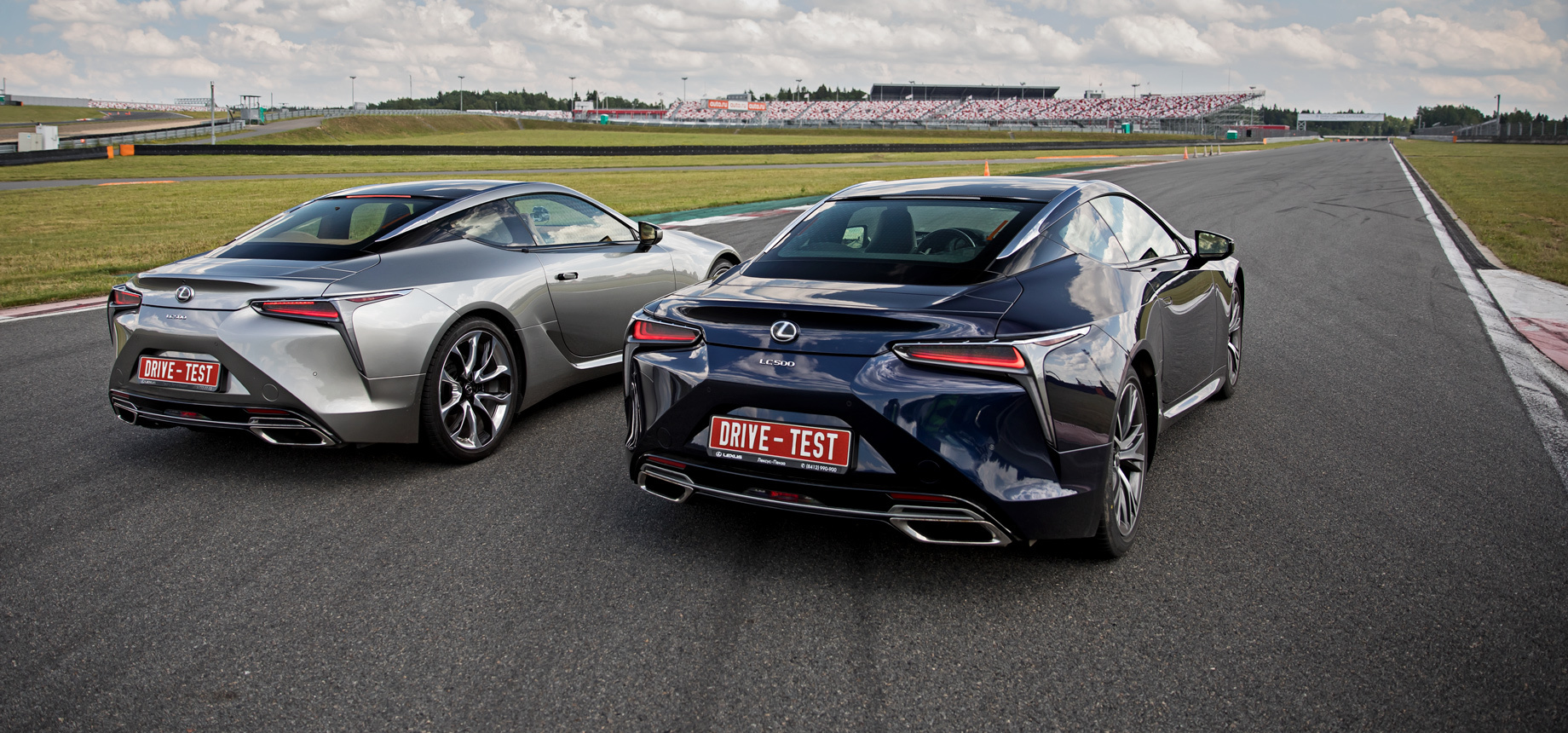
На щастя, «вісімка» 5.0, яка реально везе всього три тисячі, вписується в 3,5 галона на 60 миль за рахунком на АЗС в режимі «не відмовляй собі ні в чому». Якщо є якась загадка про літній Lexus, то це пов’язано з економічністю. Не без допомоги комбінованого уприскування японцям вдалося домогтися незвичайного поєднання ефективності з демонстративною брутальністю від алюмінієвого двигуна V8. LC 500 гарчить як ненажерливий. І в розкішному голосі криється левова частка чарівності купе.
Ще одна сильна сторона – керованість на рівній дорозі, де вам не доведеться боротися з кудливою машиною за вибір траєкторії. Ідеальний асфальт гоночної траси тимчасово реабілітує Lexus. Ми тут не для гонок на час, а для того, щоб досліджувати межі в контрольованих умовах. Навіть на типовому приміському розвороті Potenza S001L дозволяє великому сріблястому купе розвивати 1,2 г бічної сили перевантаження відповідно до Racelogic. Цивільна Turanza синього автомобіля поступається трохи раніше. Враховуючи майже двотонну масу, краще вичавлювати всі соки з Лексусів поза дорогами загального користування.
Суха траса показує, що поведінка LC 500 залежить не стільки від коліс, скільки від режиму роботи системи стабілізації. Якщо ввімкнено, він притуплює початкову реакцію при зміні курсу, створюючи недостатню поворотність, і нейтралізує тенденцію до заносу, притаманну кінематиці шасі. При цьому момент розгортання повної керованості, помітний взимку на тлі ледь помітних перехідних процесів, зовсім не відчувається.
Без хомута Лексус краще збалансований. Чуйний, чутливий до динамічного перерозподілу маси по осях, грайливий і не надто строгий до помилок. Кермо завжди ідеально завантажене… Навіть після їзди боком всю зиму я трохи здивований, наскільки зручним є дрифт-кар LC 500, коли він має зчеплення. Купе 2019 року з його широкими задніми шинами зручніше їздити на швидкісному ковзанні по суші, тоді як блакитний автомобіль цікаво кидати в ритмічні заноси під дощем завдяки більш м’яким зривам і стабілізації.
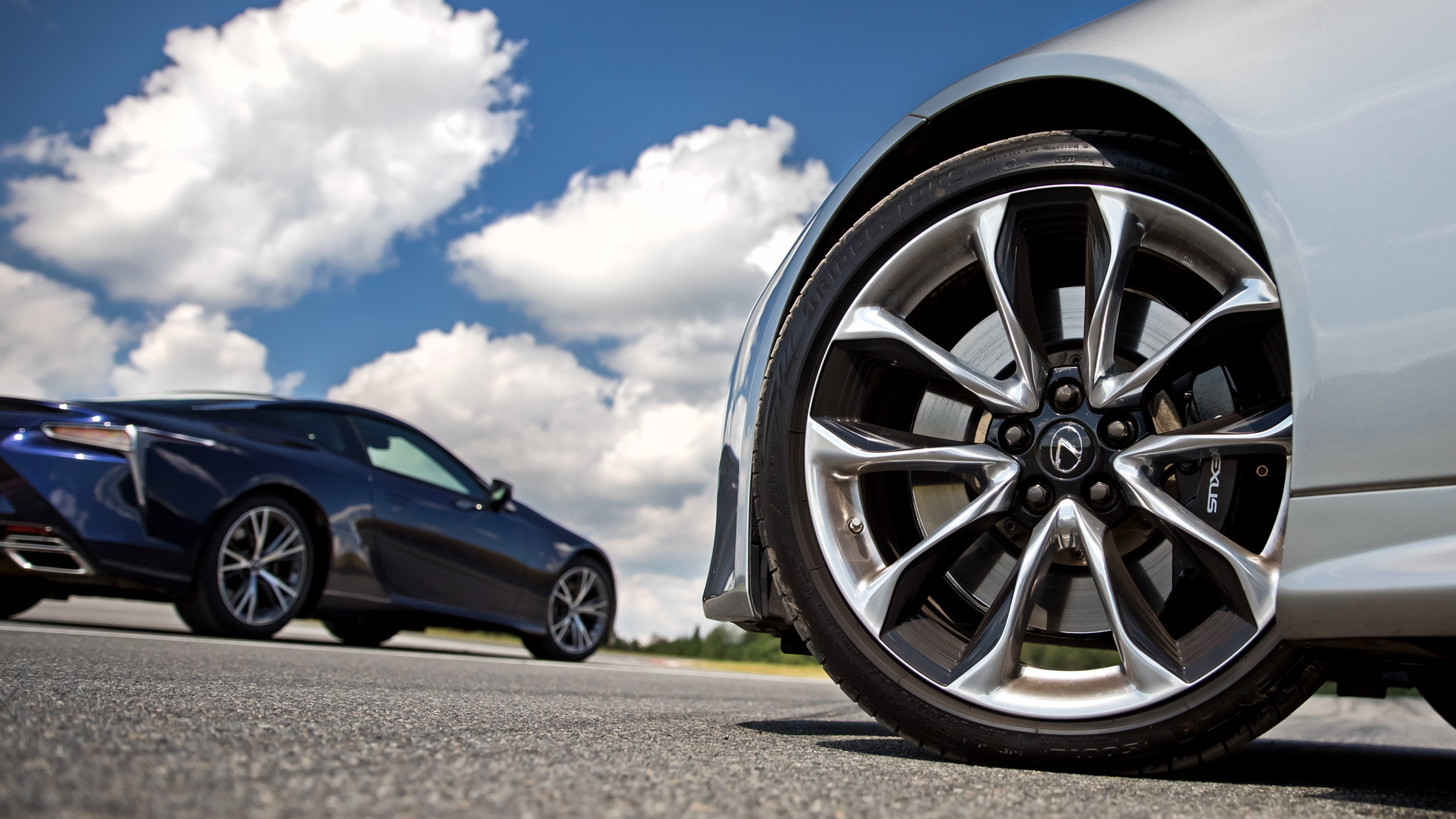
Не обов’язково садити нашого тест-пілота за кермо, щоб переконатися, що гальма не здатні тривалий час підтримувати темп на трасі, на який здатні шасі і силовий агрегат, який не має ознак перегріву. Але логіка АБС не викликає питань. Навіть на нерівних дорогах. А повні зупинки зі швидкості 60 миль/год, які можна назвати стандартними, LC 500 виконує зі стабільним результатом. Шлях, пройдений від моменту удару по слабо вібруючої педалі, відрізняється в залежності від шин на пару футів…
Навіть після використання комплекту шин для веселого дріфту я не можу не відчувати, що LC 500 був цікавішим взимку. Тема протистояння природі виключена, а спілкування з Lexus пройшло емоційно. Коли вам не потрібно чинити опір труднощам, а просто виконувати рутину та бути автомобілем, LC 500 викликає низку запитань, зокрема щодо налаштувань підвіски. Це вже не здається настільки особливим, щоб миритися з цінами.
Не вважаю за потрібне змінювати зроблені в кінці зими висновки: LC 500 заслуговує на місце в історії. Проте, якби наше випробування почалося влітку, градус романтичного пафосу в моїй розповіді був би, мабуть, меншим. Lexus потрібно ретельно підбирати шини — вони сильно впливають на враження. Заводська комплектація до першої нерівності нагадує Gran Turismo. Зима дозволяє «японцю» маскуватися під спорткар — на жаль, на суші занадто великі крени і амплітуда руху кузова, а амортизаторам не вистачає енергоємності.
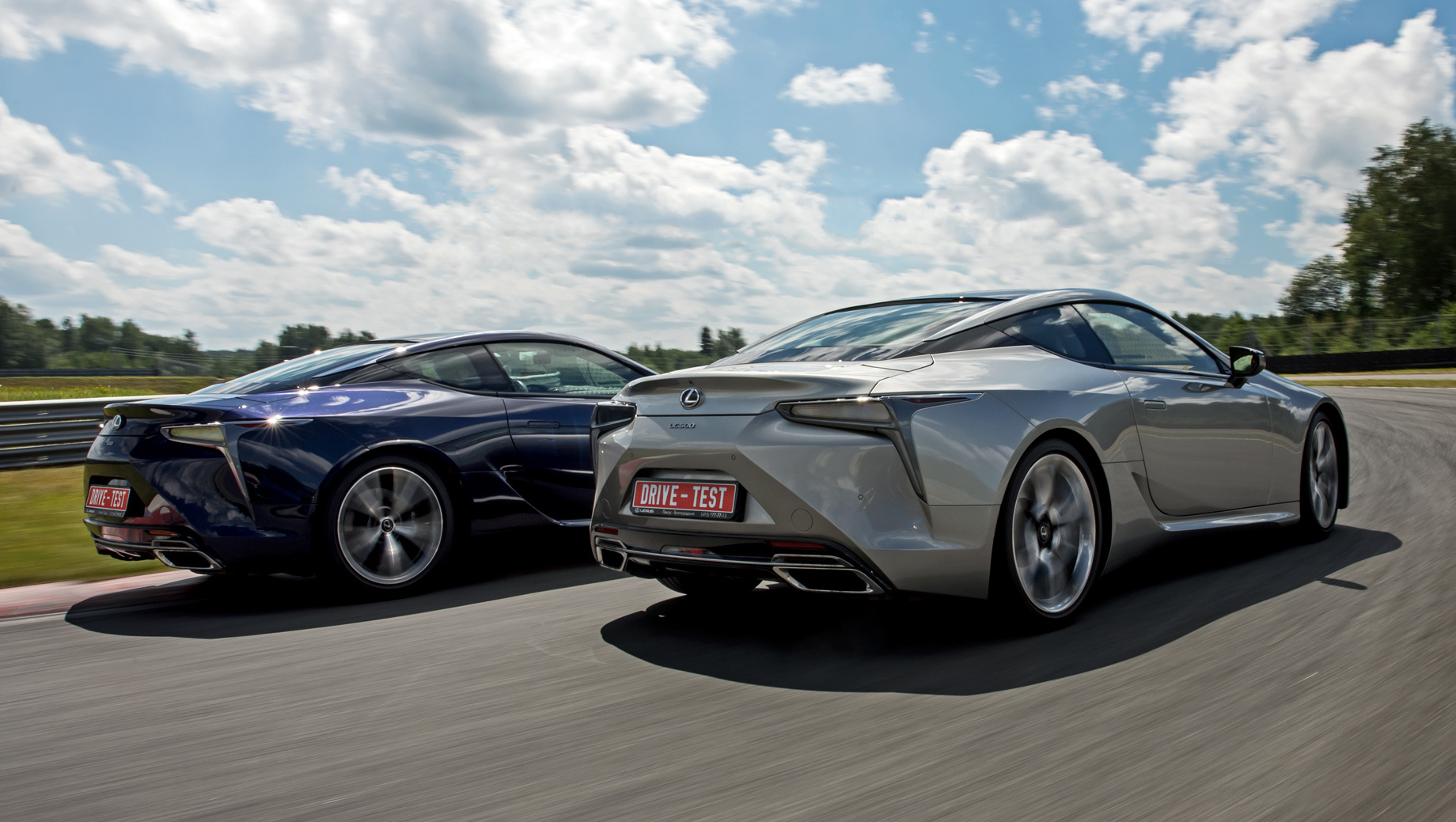
Швидкість взагалі є, а пристойна дорога дозволяє навіть повеселитися. Як каже наш тест-пілот, якщо їхати вздовж Рейну, то по дорозі до хорошого ресторану можна виїхати на Нюрбургринг, зробити коло в своє задоволення і обігнати якийсь гарячий хетчбек. З вуст того, хто перейшов на двотонний LC 500 прямо з GT3 RS, ця трохи поблажлива оцінка звучить як щедрий комплімент.
Це переклад. Оригінал можна прочитати тут: https://www.drive.ru/test-drive/lexus/5f0df5a0ec05c472100000aa.html

Опубліковано Жовтень 13, 2022 • 5хв на читання

